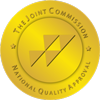Xanax Addiction and Treatment
Anxiety disorders are the most common form of mental illness affecting adults and children today. As a result, each year, approximately 44 million prescriptions for Xanax are written by doctors to treat this type of disorder. In 2013, 50 million prescriptions were written for Xanax.
While there are various kinds of medications used to treat this condition, Xanax seems to be the most popular choice. Why do you ask?
The reason being is that Xanax is a highly-potent (strong) drug, which tends to quickly and effectively alleviate and treat symptoms of generalized anxiety disorders (GAD), and a variety of other health conditions, such as panic disorders, insomnia, phobias, epilepsy, pain, and involuntary muscle spasms.
Xanax provides a reward by relieving symptoms in a quick manner, which is why people gravitate towards drug use in the first place. What individuals, unfortunately, don’t seem to realize, is that the symptoms tend to only dissipate on a short-term basis.
Thankfully anxiety is treatable but it often comes with a cost. As a result of the effectiveness of Xanax, people increase their dosage with every use, quickly becoming more tolerant and dependent on the drug. Before you know it, dependence then turns into an addiction.
What is Xanax?
Xanax known by the brand name alprazolam is a drug classified as a benzodiazepine. Benzos are depressants or sedative-hypnotic medications, which affect the central nervous system (CNS).
Within the United States, Xanax is the most prescribed type of psychiatric drug, mainly used for the treatment of generalized anxiety and other conditions, including mental illness such as depression.
When distributed, Xanax comes in pill form of different shapes and colors, depending on their strengths, which usually ranges from 0.25 mg, 0.5 mg, 1 mg, and 2 mg.
Many people who take Xanax with or without a prescription have described the drug-producing side effects such as feelings of calmness and sedation. For individuals suffering from anxiety and sleep disorder insomnia, Xanax calms symptoms and helps induce sleep.
Despite being a short-acting drug, Xanax is very strong and highly addictive when used long-term. Xanax is defined as a controlled substance, meaning that it requires a prescription by a medical professional. Although despite helping millions of people, this type of benzodiazepine is not only the most prescribed but, also one of the most abused on the market today, as it is often not distributed legally or taken as directed.


How Does Xanax Affect the Brain?
In the 1960s, benzodiazepines were first developed to replace another type of class of sedative drugs called barbiturates, also used back then to treat anxiety, insomnia, and seizure disorders, such as epilepsy.
The central nervous system (CNS) containing the brain and spinal cord is responsible for controlling most functions of the body and mind, including movement, sensation, awareness, thought, speech, and memory. In other words, this part of the body is what keeps us alive.
When a person takes Xanax, a chemical called gamma-aminobutyric acid (GABA) is released in the brain. GABA neurotransmitters are known as inhibitors, which means that their principal role in the central nervous system is slowing down the activity within the brain’s nerve cells (neurons).
As a result, individuals will typically feel calm, relaxed, and sleepy, almost like they are sedated. Since Xanax is a depressant, other common side effects include anxiety, depression, slurred speech, and loss of coordination.
Research states, that since the drug is extremely strong, the effects of the drug are usually felt quickly, within 1-2 hours after taking a dose. Xanax stays in the system for about 12-15 hours. Although, it is important to note, that everyone is different, therefore, the outcome of taking the drug will vary.

Why People Abuse and Become Addicted to Xanax
Like any other addictive substance, when people use Xanax for the first time, it increases the risk of becoming addicted later in life tenfold. According to the US Surgeon General’s 2016 report regarding drugs and alcohol, the researchers concluded that about 70 percent of adolescents who try an illicit or illegal drug, before entering their teenager years (13 yrs old) will develop an addiction within seven years, compared to the other 27 percent of people who try drugs after 17 years old.
The real reason why people typically abuse a drug such as Xanax is because of the payoff, and how the reward center part of the brain reacts when the pill is taken.
As mentioned before, when a user takes Xanax prescribed or unprescribed, it produces the opposite of euphoria, but a more sedative, floating in the clouds type of state. Therefore, people use Xanax because of the high.
When people are addicted to Xanax, they often use the drug combining it with other substances such as alcohol. This is known as polysubstance abuse, which only exacerbates the problem.
The Difference Between Xanax Tolerance, Dependence, and Addiction
Due to the body feeling rewarded with every pop of Xanax, users continue to take the drug but increase their dosage with every use to keep achieving the desired high. This is called tolerance. People who continue to use Xanax illegally, tolerance usually develops fairly quickly, and the body has gotten used to the drug over time.
After developing a tolerance to the drug, users become dependent. This means that as one continues to increase the dose of Xanax with every use, the body develops a dependence on the drug. Since now the body is used to it, a person who has developed a physical dependency cannot function normally without having to take Xanax.
After tolerance and dependence, addiction is the inevitable last phase in the cycle of this destructive disease. As the user is now physically dependent on Xanax and cannot function without it, they develop an addiction. Despite the consequences, one’s health, thoughts, mood, and behaviors become compromised.
In other words, as Xanax is so powerful, it begins to control and take over all aspects of a person’s life, socially, mentally, and physically. Relationships become ruined, functioning in school, at work, and the ability to perform everyday tasks becomes troublesome. Without professional help.
On average, evidence-based research has shown that someone with a Xanax addiction may take as many as 20-30 pills per day. To recover from addiction professional medical treatment at an accredited facility is necessary.
There is a difference between drug use disorder and drug addiction. This goes for Xanax use disorder and Xanax addiction. Use disorder refers to ongoing recreational use of the drug, while addiction refers to chronic use the drug causes physical and psychological dependence, and without it, individuals are unable to function normally.

Signs of Xanax Addiction
When people need a higher dosage of any type of drug to get the same effect, this is a strong sign and indicator that tolerance has developed. There are various risk factors and signs that someone has become addicted to Xanax.
Understanding these signs and symptoms can make all the difference in getting you or someone you love the help that they need to recover before it becomes too late.
The signs and symptoms of Xanax addiction to look out for include the following:
- Continued use of Xanax despite health, social, physical, and psychological consequences
- Inability to stop using Xanax despite wanting to
- Extreme cravings
- Sudden loss of interest in activities you once enjoyed doing
- Obsessing about using drugs and using all your money to buy them
- Loss of control on the amount of Xanax taken
- Partaking in risk-taking behaviors


Dual Diagnosis: Xanax Addiction and Mental Illness
Substance use disorder of drugs and alcohol is a major risk factor or indicator of underlying mental illness. When a substance use disorder (SUD) and mental disorder occur simultaneously, this is known as dual diagnosis or co-occurring disorders.
The most common mental disorders that occur include anxiety, depression, bipolar disorder, schizophrenia, PTSD, etc. When symptoms become unpleasant, individuals with co-occurring disorders turn to substances such as alcohol to cope. This is an effort to try and numb their suffering despite the consequences that occur as a result of using drugs or alcohol.
Although, people think that engaging in these risky behaviors does mask the pain, truth is, it only makes things increasingly worse. Since Xanax is a drug used for treating anxiety disorders, drinking and taking other drugs simultaneously often makes the condition harder to diagnose and treat.
Without treatment, Xanax addiction can cause a host of health complications, including slowed heart rate, loss of balance, muscle weakness, extreme drowsiness, insomnia, coma, overdose, and death.
An overdose on Xanax can be fatal, as it was designed to be released over time into the system (time-release) especially when the drug is taken with alcohol or other drugs. If not careful, Xanax addiction can take your life.
The stigma surrounding mental health is more real than ever before. People with mental illnesses and addiction feel discriminated against. As a result, they feel guilt, stress, depression, etc., which deters them from finding the help they desperately need to break the dangerous cycle of addiction.

Xanax Addiction Treatment
Detox
Detoxification is the first step in the treatment process. Before people can officially start treatment, they need to go through detox. Through the use of anti-craving medications and other processes, Xanax is removed from the body. This unconventional way of ridding these toxic substances from the body evokes a physiological reaction in the body called withdrawal.
These unpleasant withdrawal symptoms include:
- Nausea/vomiting
- Seizures
- Depression
- Anxiety
- Chills and shakes
- Insomnia
- Pain and Muscle weakness
Everyone is different, so the amount of time it takes for withdrawal symptoms to subside will vary. Once the Xanax is completely removed from the system, treatment can begin.
Overcoming a Xanax addiction like any other isn’t easy, but it is possible with the right form of treatment and facility. At NJ Rehabs, our comprehensive inpatient and outpatient treatment programs help someone addicted to Xanax their best chance at achieving and maintaining long-term sobriety. Along with psychotherapy, counseling, medication management, and other resources, we help people of all walks of life cope with and learn ways to manage their conditions effectively.
Addiction Will No Longer Control You!
Addiction to Xanax no longer has to control you! At Sana Lake Recovery Center our multidisciplinary team of addiction specialists is here to help you every step of the way. From recovery to relapse prevention, contact us today to find the perfect treatment program for you. A life free from addiction is possible!



